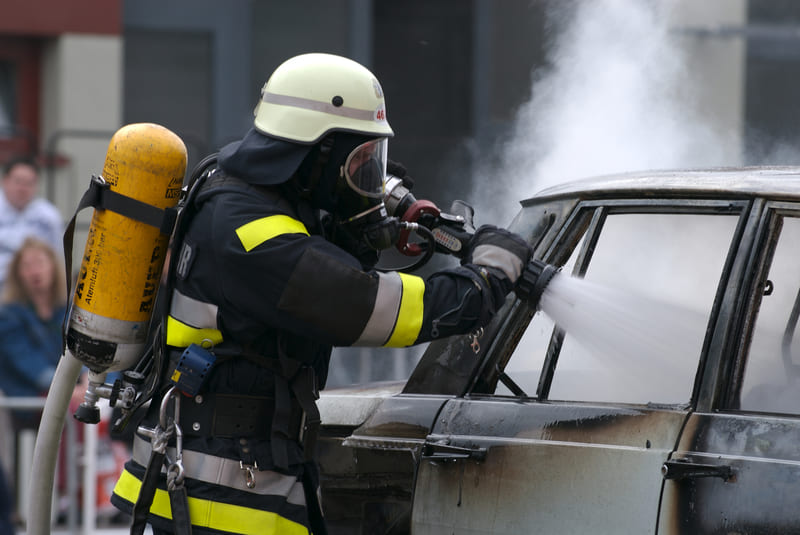Blog Post
Fire Fighter 1 Training Techniques: Adapting To Modern Challenges

If you are interested in taking part in an EMCARE fire fighter 1 course, then you have come to the right place. Inside the chaos of a building on fire, the difference between a well-trained fire fighter and an inadequately trained one can, understandably, mean everything. However, being appropriately equipped to navigate the complex plethora of environments and settings that our modern world presents to society’s first responders is no small feat. In landscapes of high-rise buildings and complex electrical infrastructure, the traditional methods of fire fighting are continually tested, necessitating an evolution in the way these brave men and women are trained.
Before Fire Fighter 1: Fire Fighting History
The evolution of fire fighting training is a story of constant adaptation to emerging challenges and incorporation of technological advancements. Historically, fire fighting efforts were rudimentary and community-based. In the 17th century, everyone was a fire fighter; lines of people would pass buckets of water in collective dousing attempts. It was only in the 18th century when society saw the creation of the first organised fire brigades. Regardless, the initial focus was primarily on the rapid mobilisation of community resources.
With the advent of the industrial revolution and the resulting increase in urbanisation, the nature of fires and fire fighting changed dramatically. The first major shift came with the introduction of steam-powered fire engines in the 19th century. These motorised-machines enabled quicker responses and more efficient water delivery. This period also saw the establishment of fully-professional fire departments, replacing the society-standard volunteer brigades and also necessitating structured training programs for fire fighters.
Training during this era primarily focused on physical strength and agility, hose management, ladder operations, and basic rescue techniques. However, the two World Wars and the mixture of destruction and innovation they entailed brought about a new understanding of the importance of fire prevention and control as well as advancements in both fire fighting equipment and training.
In the latter half of the 20th century, as buildings grew taller and fire codes became more complex, fire fighter 1 training programs began to incorporate more sophisticated tactics and strategies. The emphasis shifted from merely combating fires to understanding fire behaviour, building construction, and the science behind fire suppression. This period also marked the beginning of specialised training programs. A new approach to fire fighting training that addressed the diverse and specific risks associated with different types of structures and fire scenarios.

The Challenges Of A Modern Urban Environment
The introduction of skyscrapers drastically changed both the dynamics and the demands of the fire fighter. High-rise buildings have not only made access and evacuation more difficult, but also pose challenges in terms of hose water pressure and the potential for rapid fire spread due to hot vertical channels (remember, hot air rises!). As such, these challenging structures require specialised equipment and tactics, such as the use of standpipes and high-reach aerial apparatuses.
Additionally, the complexity of modern infrastructure requires fire fighters to be adept in scenarios that often involve limited space and visibility. All this necessitates advanced navigation and rescue skills.
EMCARE Fire Fighter 1
In response to these challenges, fire fighter 1 training has become more comprehensive. Courses like EMCARE’s Basic and Intermediate fire fighting programs now cover a wide range of skills, from managing different types of fires using basic fire fighting equipment to executing complex rescues in confined spaces. Urban environments are also filled with more hazardous materials, whether in industrial settings, transportation incidents or even just office blocks.
Dealing with such materials requires fire fighters to have specific knowledge and skills in containment and mitigation. EMCARE’s Hazardous Material (Hazmat) Handling Course focuses on this vital aspect of modern training, equipping fire fighters to identify and manage these serious risks effectively. The focus has shifted from general fire fighting techniques to specialised skills tailored to the diversity of modern societie’s infrastructural emergencies.
This shift towards specialised, scenario-based training reflects the changing nature of urban fire fighting, where a one-size-fits-all approach is no longer an option. Fire fighters must now be prepared for a wide array of potential emergencies. Each demands a unique and specific set of skills and knowledge.

Advances In Training Methods: Fire Fighter 1 And Beyond
Fire fighter training has evolved towards an emphasis on a deeper understanding of fire dynamics as well as skills that extend beyond what is traditionally expected of fire fighters. Integrating comprehensive theoretical knowledge with practical hands-on experience fosters the essential understanding of fire science and the realities of fire fighting in diverse environments.
Over the years, the theoretical aspect of fire fighter training has evolved beyond basic fire fighting techniques (like how to pass a bucket of water to the person standing next to you). Through scientific advancement it has grown to encompass a thorough understanding of the behaviour of fire, how different materials ignite and burn, what the impact of different weather conditions on fire dynamics are and an understanding of building construction and all the elements involved.
Fire fighters also learn about the structural integrity of different building types, how fire can spread through various construction materials, and the safest and most effective ways to navigate buildings during fire fighting operations. Understanding the importance of developing this knowledge as a fire fighter, EMCARE offers different fire fighting courses to set you on the right track. To start with, consider our Fire Fighter 1 course.
Fire dynamics is another critical component. Studying the intricate dynamics of fire entails an investigation into the chemistry and physics of fire. This includes studying the different stages of fire development, the various conditions that lead to flashovers (an explosive-like ignition of all combustible materials in an area when critical temperature is reached) and backdrafts (when accumulated gases and smoke ignite after oxygen is reintroduced to a fire-depleted environment), and the best strategies for effective ventilation and containment. Knowing the core principles of fire dynamics not only allows for appropriate fighting of fires but ensures fire fighters are able to predict and mitigate potential hazards during an operation.
GET IN TOUCH
There are a few ways to reach us below. Please feel free to contact us via phone, email or you can send us a message via the form provided and we will get back to you.




















